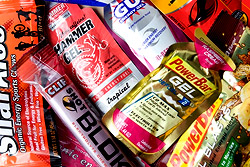Tokyo Marathon Recap: A runner abroad
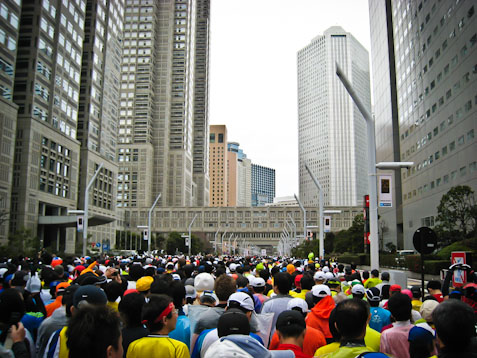

|

|
My wife was worried. My mom was worried. Even my nine-year-old daughter was worried. And yes, I too was a little anxious as my departure date for Tokyo drew closer.
I'd never been to Japan before, so the thought of making my own way through customs and then from the Tokyo Narita airport to the Keio Plaza Hotel more than an hour away was a bit concerning. Would I find people who spoke English? Would I have any trouble exchanging my dollars for yen? Would I get on the right shuttle bus to the right hotel? Even though I assumed everything would work out fine, it all was a little intimidating for an Ohio guy who spends most of his days working from home and carting his kids to and from school.
And then, there was that whole marathon thing to worry about. I spent a couple hours in a local ER getting treatment for severe dehydration following the Chicago Marathon last October, and my body powered down for a quick nap in the chute after the Arizona Marathon in January. Needless to say, I was hoping to avoid any such experiences in the Tokyo Marathon, considering I would be in a foreign-speaking country more than 7,000 miles from home. The less post-race drama, the better, and I hoped my body would more easily handle 26.2 miles the third time around.
The good news is, I didn't wind up in a Tokyo hospital last weekend. Even better, I had no trouble finding my way to the Keio Plaza Hotel upon my arrival, and I even found a small Italian restaurant for a traditional pre-race meal Saturday night. The people of Tokyo -- from the hotel staff and the workers at the Shinjuku train station to the more than 2 million spectators who lined the street during the race -- were friendly, helpful, patient and incredibly gracious. Many of them even spoke English (to varying degrees), which was a bonus for a Yankee like me who only knew how to say "thank you" in Japanese, and I even screwed that up repeatedly on my first day.
© TOKYO MARATHON
The bad news? I didn't run as well as I'd hoped, but after the unbelievable week I had in Japan, I'm not really complaining. I've learned something about marathon running in each of my three races, with the main lesson from Tokyo being that I can never just assume that I'm drinking enough water along the way. I went into the race confident that my modified hydration and nutrition plan was sound and would help lead me to a PR if I just ran a controlled race, but evidently I didn't take in enough water in the later stages and faded badly down the stretch before battling severe nausea once I crossed the finish line. The Japanese version of Gatorade brought me back from the dead, thankfully, and ensured that an otherwise fantastic day would not end on a very unpleasant note. I'm frustrated with the finish, but it didn't tarnish the experience.
Race day started with some photos of our press tour group and, soon after, a realization: Wow, it's cold out here. Colder than we expected. Fortunately, I had chosen heavier clothes than I otherwise would have, thinking I could ditch a layer prior to the start if I overdressed. Instead, I kept every last stitch on throughout the day, including the earband and gloves. In my right pocket: my little Canon Powershot camera, which I would soon learn is the perfect size for photorunning. (Someone asked if I coined the word "photorunning." Considering how many photo opps unfold on a typical run, I doubt it, but I like it either way.) A suggestion from a friend convinced me the best method to document the race was to take shots on the move rather than stopping to compose the photos, with the resulting crooked and/or occasionally blurry pictures suiting the event well. Second-best decision of the weekend. (The Japanese Gatorade was #1. Easily.)
More than 36,000 runners gathered in the street in front of and around the corner from the Tokyo Metropolitan Government Building, a majestic two-tower structure that now has served as the starting point for each of the six Tokyo Marathons since 2007. At 9:10 am local time, we heard the starting gun from all the way back in corral G and slowly made our way toward the starting line. Eight minutes later, my race had officially begun.
The energy at a race of this size is always intoxicating, but the amps seemed to be cranked up even more Sunday morning. The whole city was buzzing, and I felt honored to be in that place, in that moment, however insignificant my role would be. I snapped a few pictures as we crossed the starting line, went to deposit the camera back into my pocket and then realized I was better off strapping it to my wrist and just keeping it on standby. Every curve in the road brought a new memory begging to be captured, from the sea of runners rising and falling in front of me and the 10,000 cheerful volunteer members of McDonald's Team Smile, to the landscape of colorful buildings and street signs and the spectators lining the course in crazy costumes, holding up homemade signs and taking high-fives from any runner willing to give them. The runners themselves took part in the fun, with countless participants dressed up in outrageous gear, including one guy who ran as Jesus Christ, cross and all. (The proof is in the slideshow at the top of the page.) And every few seconds, I heard someone yell “Ganbatte!”, a traditional word of encouragement loosely translated as, “Do your best!” The word still echoes in my mind almost a week later.

My head was on a swivel, enjoying the sights and sounds with a goofy grin on my face and taking picture after picture after picture (after picture), all while darting through the heavy congestion and trying to stick reasonably close to an 8-minute per mile pace. Unfortunately, there were no mile markers on the course, as we've all grown accustomed to here in the States, so I tried to settle into a pace of about 25 minutes per 5km, a plan that worked well in the early stages and allowed me to largely ignore the clock as I made my way through Tokyo, passing the Imperial Palace, the Tokyo Tower (above) and the Zojoji Temple along the way. Before I knew it, I was 20km into the race with the halfway point approaching.
Because I was just six weeks removed from the Arizona Marathon, my legs weren't as fresh as I'd hoped coming into Tokyo. I held up fine through 25km but began to lose some steam after that. I wound up taking more than 300 photos during the race -- many of those unusable shots of the road or of blurry landmarks sitting behind even blurrier runners -- and considering how few of those came during the second half when I had trouble finding the energy to raise, point and shoot, I'm guessing the photorunning at least partially contributed to my slow finish. Still, I wouldn't do things differently if given the opportunity. These pics will last a lifetime -- I even stopped at one point when another runner offered to take a picture of me in front of the Tokyo Sky Tree (below). I'll have other chances to run a PR, but I wouldn't have had another chance to get that shot.
As usual, the last several miles were a struggle, made even worse by the creeping dehydration. I'm a sweater -- not in a Bill Cosby kind of way, but in a "what's with all the crusted salt on your face?" kind of way -- and apparently I need to take in even more water than I thought during a marathon to avoid crashing and burning. Nevertheless, I eventually dragged my carcass across the finish line in 3:59:25, fought back against my gurgling stomach and then slowly made my way through the chute to the gear check area, where volunteers applauded every runner as they came through to pick up their bags. On my way out, I noticed crowds of runners enjoying some time in an ashiyu ("foot bath") and minutes later, I pulled up a spot and dipped in my feet. Ahhhh…. Who do I talk to about bringing these to the US?

I was still feeling the post-race effects in the hotel lobby Sunday evening when a Japanese man approached and asked if he could take a picture of the medal hanging around my neck. He told me (through an interpreter) that he was one of the more than 300,000 people who applied for the 2012 Tokyo Marathon but he wasn't accepted. He stared at the medal, awestruck, telling me that I was fortunate to have been one of the 36,000 runners on the course that day. He said he hoped to get the same opportunity someday soon, and then asked how I ran. When I told him my time, his eyes widened and he provided me with my biggest laugh of the weekend, asking if I was a professional runner.
Not wanting to insult him, I hid my amusement as best I could and thanked him for the compliment, but told him there were many, many other runners who finished ahead of me. His reaction to seeing my medal and his deep desire to run the Tokyo Marathon himself one day proved that the organizers of this young race have built something special in a very short time. We learned during a symposium Friday night that the Tokyo Marathon hopes to one day be listed among the other World Marathon Majors, alongside legendary races like the New York and London Marathons. After what I experienced last weekend, I'd say it's only a matter of time.
Of course, I can't end this without thanking the Tokyo Marathon Foundation and our guides during the weekend for their incredible generosity. When I signed up for my first marathon a year ago, I never would have guessed I'd be given the opportunity to run a race halfway across the globe. I met so many amazing people, including several runners who have competed in dozens of races around the world. I can only hope to be fortunate (and healthy) enough to try something like this again someday, but after spending the past year training for one marathon or another, I'm just looking forward to a break.
(My official results can be found here. The site has me at 4:02:38, but whereas I stopped my watch when I chose the wrong porto-potty line during an early pit stop, their clock kept ticking. Hence, the discrepancy.)
You can follow us on Twitter and Facebook for content updates. Also, sign up for our email list for weekly updates and check us out on Google+ as well.






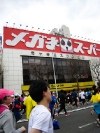





















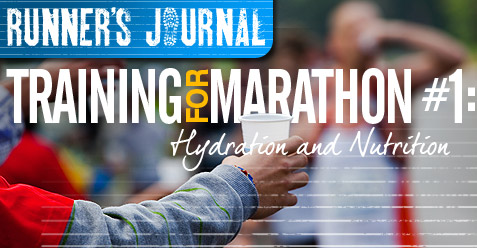
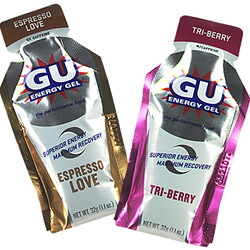 I first started looking into energy gels while training for the half last year. Also referred to as endurance or sports gels, these single-serving plastic packets of goopy carbohydrates typically contain some form of simple sugars like sucrose or fructose, and supply the body with calories and nutrients to help delay muscle fatigue while raising blood sugar levels and enhancing performance. The first and perhaps the most popular energy gel – the one you’ll likely see in sporting goods stores or during most longer races – is the previously mentioned GU. I didn’t know if I would need energy gel during the race, but since this would be my longest run ever, I figured I at least should consider it. The first thing I learned was that I needed a test run. Literally. No matter the brand, energy gels in general can cause gastrointestinal discomfort for some runners – most commonly cramping, bloating and/or diarrhea – so you’ll want to introduce them to your system during a long training run instead of a race setting, just to see how your body reacts.
I first started looking into energy gels while training for the half last year. Also referred to as endurance or sports gels, these single-serving plastic packets of goopy carbohydrates typically contain some form of simple sugars like sucrose or fructose, and supply the body with calories and nutrients to help delay muscle fatigue while raising blood sugar levels and enhancing performance. The first and perhaps the most popular energy gel – the one you’ll likely see in sporting goods stores or during most longer races – is the previously mentioned GU. I didn’t know if I would need energy gel during the race, but since this would be my longest run ever, I figured I at least should consider it. The first thing I learned was that I needed a test run. Literally. No matter the brand, energy gels in general can cause gastrointestinal discomfort for some runners – most commonly cramping, bloating and/or diarrhea – so you’ll want to introduce them to your system during a long training run instead of a race setting, just to see how your body reacts.